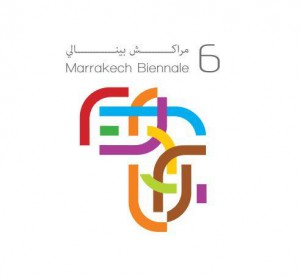6th Marrakech Biennale 2016
Traces
Curator: Reem Fadda
February 24th – 8th May 2016
The opening week 24-28 February
Press preview 23 February
Reem Fadda has been working as the Associate Curator, Middle Eastern Art with the Guggenheim Foundation in New York on their Abu Dhabi Project for the past 5 years.
Fadda’s curatorial approach has largely been more cross-disciplinary and focused on contemporary topics in the Middle East, especially those pertaining to art, architecture, space, history and geopolitics.
For MB6, Fadda is envisioning to expand on a Pan-African vision, one that is mapped through histories theories and practices manifest across the entire continent and beyond. Reem Fadda will develop a conceptual framework around the theme “Traces”, according to which a variety of artists and projects will invited to the exhibition.
By adding the free entrance as well as the art in public spaces program, MB6 seeks to realize the concept of ”Art for all” by bringing the Biennale to a wider public and out to the streets of Marrakech.
By prolonging the exhibition period to a full 11 weeks, the Biennale will span over the spring season of tourism and hence be acccesible to more visitors; visiting foreigners and busy Marrakechis alike.
Concept of “Traces”
The concept of ”Traces” has been the subject of much research and experimentation in the world of contemporary art. In Marrakech, we have the imression that there is a an urgency to seize the multiple meanings of this word.
Marrakech is more and more becoming a city of art and culture, literally bubbling with cultural and artistic activities offered at its many events and cultural venues. Whereas earlier, the Red City distinguished itself by its historical legacy, it now radiates with artistic and cultural appeal.
This diverse and sometimes dissonant profusion, is in the actual constitution of the city’s cultural vitality. As such, it needs to be as much encouraged, as dealt with caution. The Marrakech Biennale has contributed by establishing this fine balance, and should also contribute by dictating the major issues.
Traces….the choice of this theme is meant as a way to welcome this current path but also as a way to underline the importance of culture and art in the imperative dialogue between the city’s past, present and future.
We have chosen three semantic units to serve as guides for our curators and artists:
Origins …the symbolic understanding the word «Traces» brings us back to both the question of identity as that of ”metissage”. It’s more tangible meaning invites us to think of signs, signatures and fingerprints. The source is undoubtedly one of multiple identities: Marrakech is such a diverse oasis, which offers different appearances depending of who perceives it. It invites us to draw on the cultural roots of the city: Islamic, Arab, Amazigh, African, Hispanic, Jewish … It is in short this historical and contemporary multiculturalism through which the artists will do their exploration of the cultural footprint; the origins.
Movements…the word evokes memory as well as retrospection. It invites the artists to work on their creations in the duality of space and time. It also includes the concept journey, intimate journey, imaginary, virtual, visual and urban routes. The audience, just like the gaze, move from one space to another, from inside to outside and vice versa, from a given space and time to another. Digital- and visual arts will be used in public spaces for their ability to interact with the space and time.
Dialogues….between an empty moment and a full one: in search of that unsettling moment that will forever transform the given environment and its participants. This third foundation of our research will be that of the meeting between different disciplines, media and forms; between the artist and the public; between the artist and the urban space. Dialogue is the cornerstone that will guarantee both the anchoring of the works, in our urban and cultural landscape, as well as their capacity to remain illusory.
Lastly we point out that, in our invitation to reflect over the question of Traces (and its extension of Origins, Movements and Dialogue) this topic is equally valid for an examination in an international perspective, as they are relevant for Marrakech of today.


